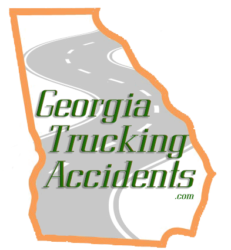Truck Accident Causes in Georgia
Truck accidents can cause death and catastrophic injury to occupants of the passenger vehicles involved. That is not to say that the truck drivers themselves are never in danger. However, the overwhelming majority of those injured or killed in truck accidents were occupants of a vehicle other than the big rig. That is no coincidence. The size and weight disparity between a passenger car and a large truck account for the devastation that can occur in a collision between the two vehicles.
Every driver on the road in Georgia owes each fellow motorist, motorcycle rider, bicycle rider, and pedestrian a duty of care. The precise nature of the driver’s duty depends on the type of vehicle driven at the time of the crash. Truck drivers who have advanced training on operating a commercial vehicle should be judged whether they violated their duty of care by whether the driver deviated from the degree of care used by the average, or reasonable, truck driver in the circumstance. Violating the duty of care owed to other motorists can cause truck accidents.
Federal and state transportation agencies specify a driver’s duty through use of regulations. The National Transportation Safety Board (NTSB) and the Federal Motor Carrier Safety Administration (FMCSA) investigate trucking accidents and develop statistical analysis of the causes of crashes after the investigation. Essentially, the NTSB’s investigators examine a crash scene and determine the cause of a particular truck wreck. Meanwhile, the FMCSA has the authority to regulations concerning large truck safety and compiles statistics to develop trends.
Through their exhaustive work with investigating large truck crashes, the NTSB and FMCSA have developed criteria for which each crash and its essential primary cause may be defined. Analytically, accident causes are grouped into three categories:
- Driver initiated,
- Mechanical, and
- Environmental.
Drivers have little control over the environmental causes for crashes. Notwithstanding, truck drivers must drive in a manner consistent with the road and atmospheric conditions.
Driver-initiated causes of truck accidents
The NTSB and FMCSA have identified numerous driver-initiated causes of truck crashes. The causes of truck accidents include:
- Prescription drug use,
- Traveling too fast for road conditions,
- Lack of familiarity with route and road,
- Over the counter drug use,
- Inadequate surveillance of road and traffic conditions,
- Fatigue and actually sleeping,
- Illegal maneuver,
- Inattention,
- Exterior distraction,
- Insufficient evasive action,
- Aggressive or reckless driving,
- Lack of experience or familiarity with vehicle,
- Tailgating,
- Inaccurate response to others’ actions,
- Under pressure to accommodate additional loads,
- Under pressure to drive even after voicing complaint of fatigue,
- Conversation,
- Misjudged distances,
- In a hurry before crash,
- Illness,
- Interior distraction,
- Unlawful drug use,
- Discomfort with vehicle or load,
- Self-imposed pressure to drive though meeting regulatory requirements,
- Required to accept trips on short notice,
- Emotional disquiet before crash,
- Alcohol use,
- Issues with judgment causing a moving violation such as failure to yield, and
- Pressure applied by the trucking company to perform.
When any one or a combination of these driver-initiated factors occurs, other motorists are endangered. These factors cause the driver to lose control over the truck causing rollovers, jackknifes, rear-end, and sideswipe crashes. Additionally, these factors can cause the driver to neglect to perform a thorough and exhaustive pre-trip safety exam of the truck. That can lead to equipment failure such as tire blowouts, loss of a wheel, brake loss, or shifting cargo.
Put Our Law Firm’s Over 33 Years Of Legal Experience To Work For Your Case!
The time you have to legally receive compensation is limited. Sources:
Cited within and
https://www.ntsb.gov/safety/safety-studies/Documents/SS9502.pdf

